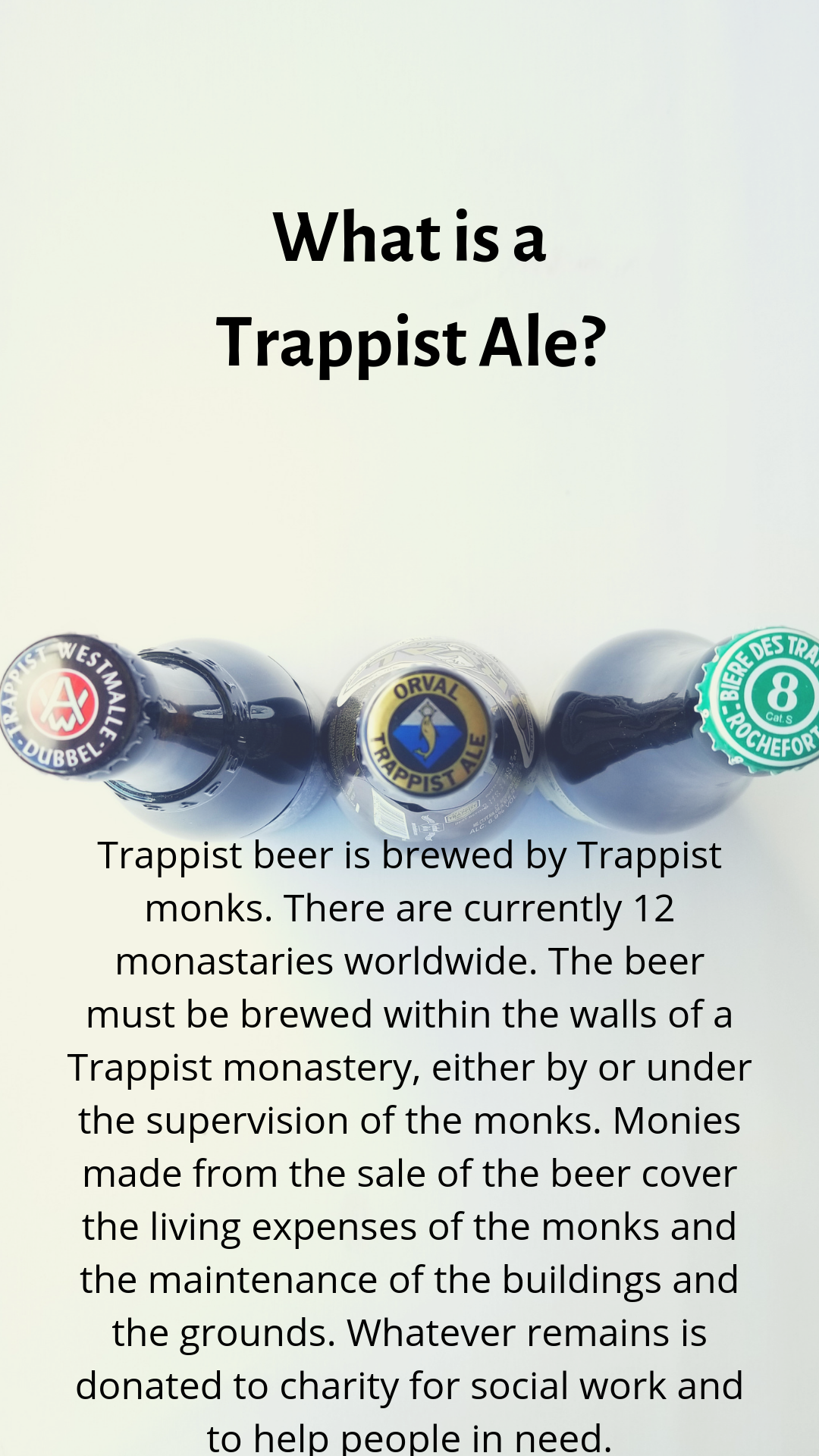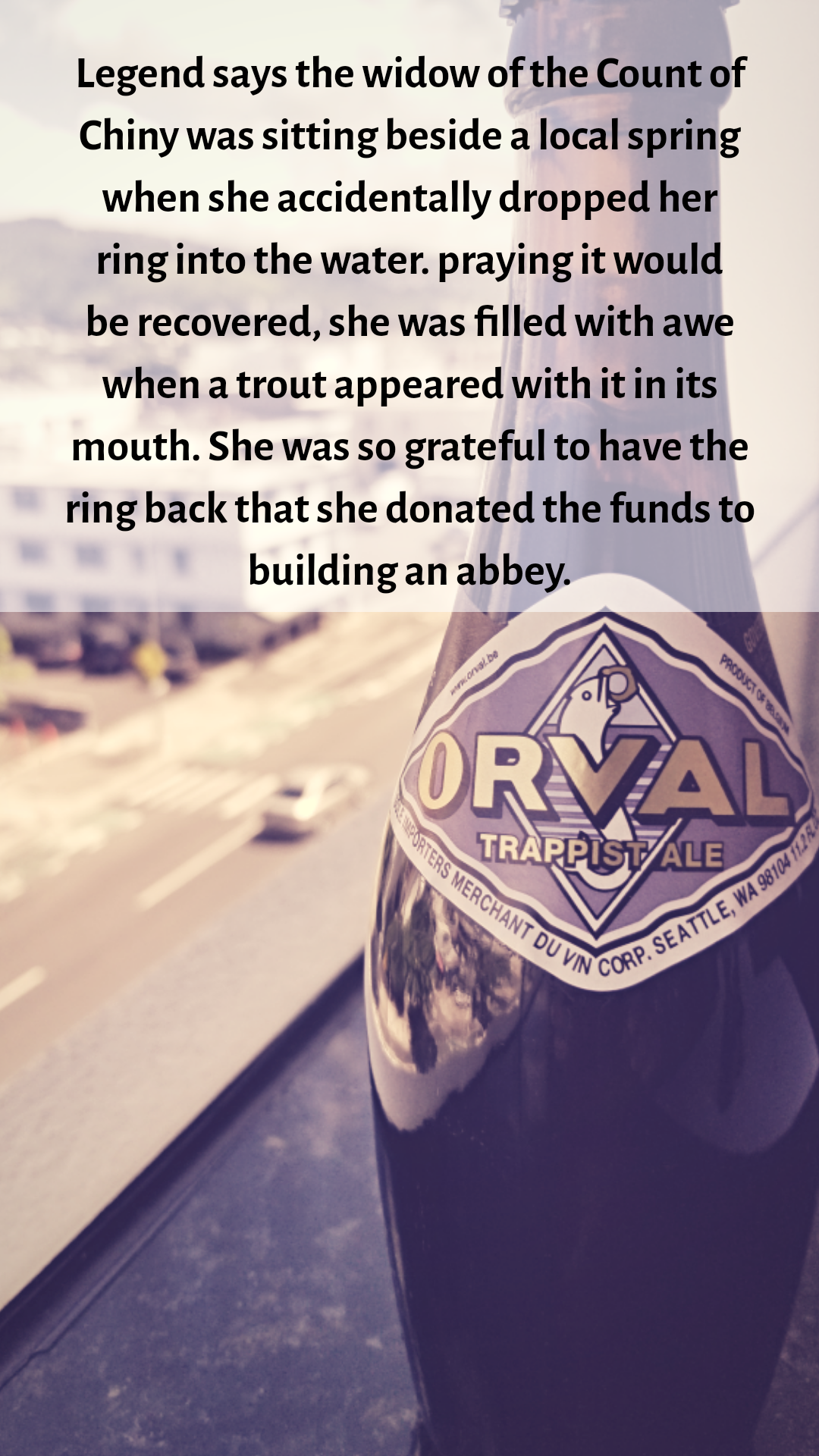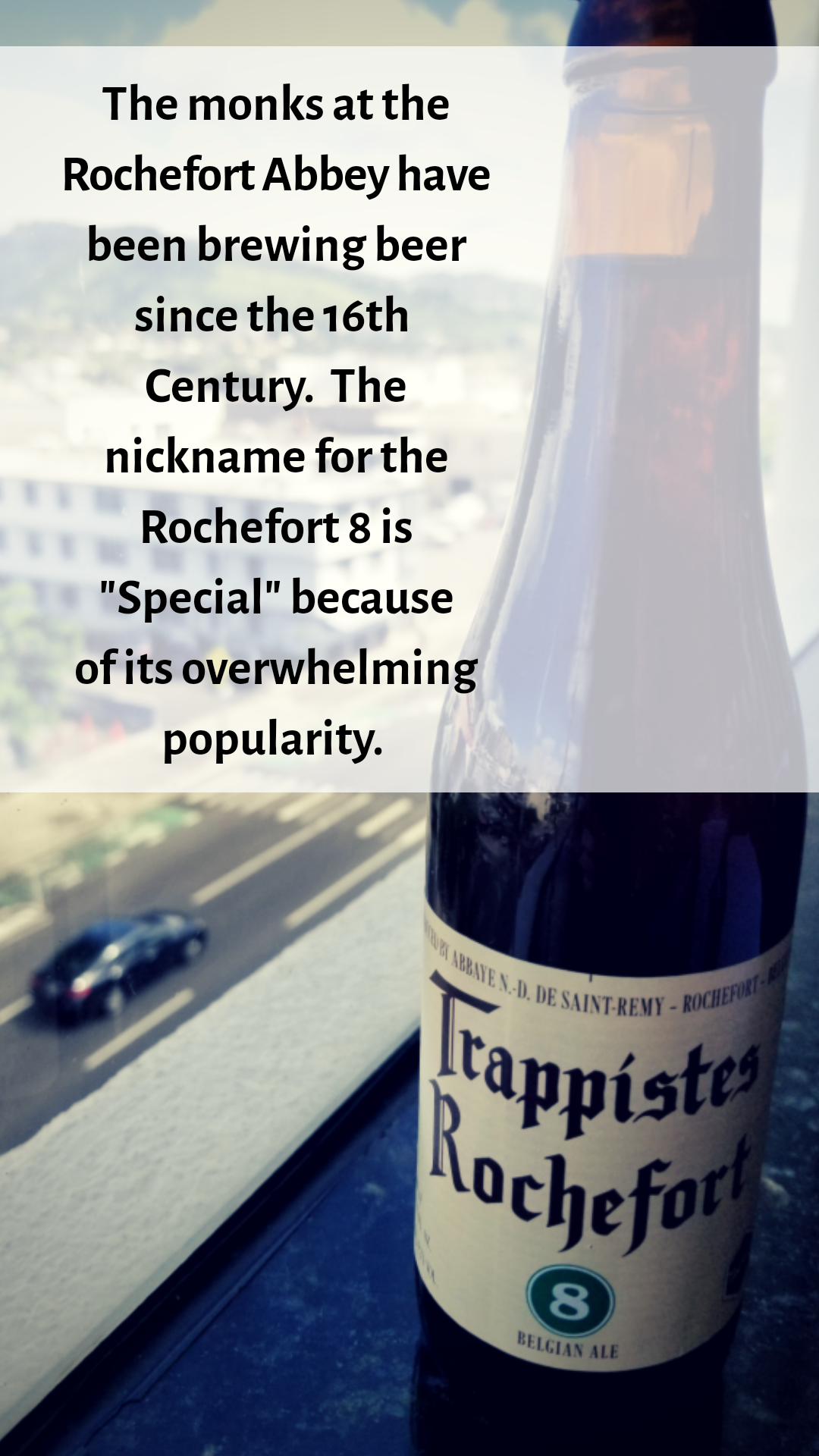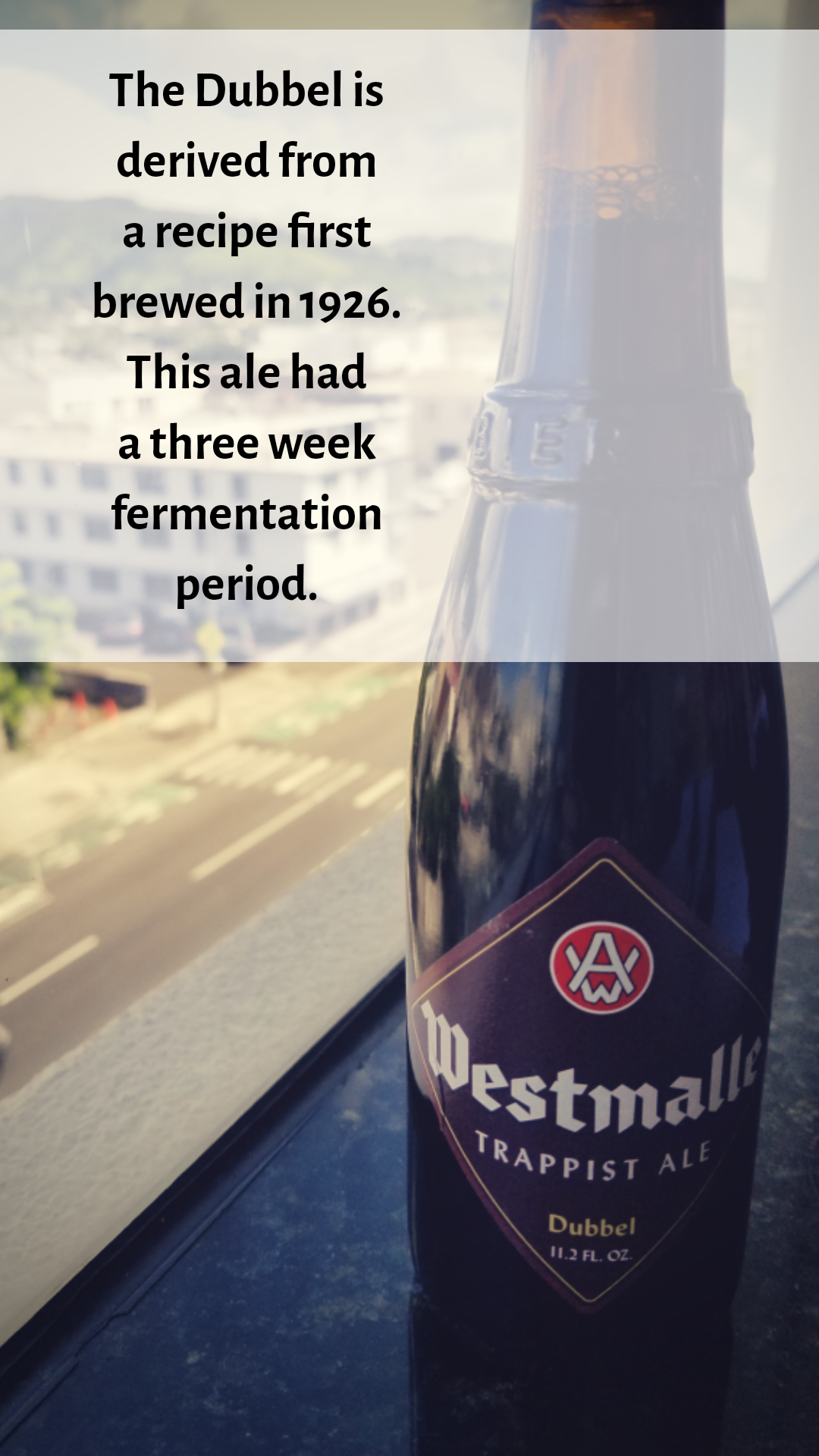So, what is Trappist Ale?
Trappist beer is brewed by Trappist monks. Twelve monasteries—six in Belgium, two in the Netherlands, and one each in Austria, Italy, England and the United States—currently brew Trappist beer.
In 1997, eight Trappist abbeys – six from Belgium (Orval, Chimay, Westvleteren, Rochefort, Westmalle and Achel), one from the Netherlands (Koningshoeven) and one from Germany (Mariawald) – founded the International Trappist Association (ITA) to prevent non-Trappist commercial companies from abusing the Trappist name. This private association created a logo that is assigned to goods (cheese, beer, wine, etc.) that respect precise production criteria. For the beers, these criteria are the following:
• The beer must be brewed within the walls of a Trappist monastery, either by the monks themselves or under their supervision.
• The brewery must be of secondary importance within the monastery and it should witness to the business practices proper to a monastic way of life
• The brewery is not intended to be a profit-making venture. The income covers the living expenses of the monks and the maintenance of the buildings and grounds. Whatever remains is donated to charity for social work and to help persons in need.
Westmalle Brewery (Brouwerij der Trappisten van Westmalle) is a Trappist brewery in the Westmalle Abbey, Belgium. It produces three beers, designated as Trappist beer by the International Trappist Association. Westmalle Tripel is credited with being the first golden strong pale ale to use the term Tripel. The Trappist abbey in Westmalle (officially called Abdij Onze-Lieve-Vrouw van het Heilig Hart van Jezus) was founded 6 June 1794, but the community was not elevated to the rank of Trappist abbey until 22 April 1836. Martinus Dom, the first abbot, decided the abbey would brew its own beer, and the first beer was brewed on 1 August 1836 and first imbibed on 10 December 1836.
Westmalle Dubbel (7% ABV, 28 IBU) A reddish brown trappist ale, malty and fruit, featuring a 3-week secondary fermentation. This ale has a full, pale yellow head. The bouquet is full of esters and fruitiness. Notes of ripe banana predominate. The taste is fruity and slightly bitter, with a long, dry finish.
Orval Brewery (French: Brasserie d'Orval) is a Belgian trappist brewery located within the walls of the Abbaye Notre-Dame d'Orval in the Gaume region of Belgium. Evidence of brewing goes back to the earliest days of the monastery. A document written by the abbot in 1628 directly refers to the consumption of beer and wine by the monks. The last of the brewers to be a monk was Brother Pierre, up until the 1793 fire.
In 1931 the present-day brewery was built, employing lay people and intended to provide a source of funds for the monastery reconstruction. It was designed by Henry Vaes, who also designed the distinctive Orval beer glass. The first beer was shipped from the brewery on 7 May 1932, and was sold in barrels rather than the bottles of today. Orval was the first Trappist beer to be sold nationally around Belgium.
Orval (6.2% ABV) is the main brand. It was first made in 1931, and has a complex and unusual flavor and aroma produced by a unique strain of yeast: Brettanomyces lambicus. The beer is light in color, slightly cloudy, and has a large, foamy head. There is a complex aroma of leather, spice, and many other earthy components.
Rochefort Brewery (Brasserie de Rochefort) is a Belgian brewery which produces three beers designated as Trappist beers. The brewery is associated with the Rochefort Abbey, which originated in the thirteenth century; monks have been brewing beer at Rochefort since the sixteenth century, providing much of the income for the monastery. Around fifteen monks live at Rochefort Abbey, where the first brewery was founded in 1595. The water for the beer is drawn from a well inside the monastery walls. Rochefort uses Pilsener and Munich-type malts, and Hallertau and Golding hops.
Rochefort 8 (Green Cap, 9.2% ABV) Yellowish-brown color, with more fruits and a slight amount of Demi-sec. This variety constitutes the largest proportion of production. Dates from 1955. Originally this beer was only brewed for New Year’s Eve celebrations. Due to the overwhelming success of this beer, the monks decided around 1960 to brew it on a regular basis. Sometimes this beer is also referred to as the "Special". The lower gravity cousin to Rochefort 10. Nicknamed "Spéciale" (’The Special’), this beer is the most recent production. The Rochefort 8 has a tawnier color and a more pronounced aroma, with an even richer fruitiness (a slight undertone of fig) and a little more spiced dryness, like that of a cake, which gives a balanced finish to the final notes.
-- Kerry Ichimasa, Assistant Wine Director




